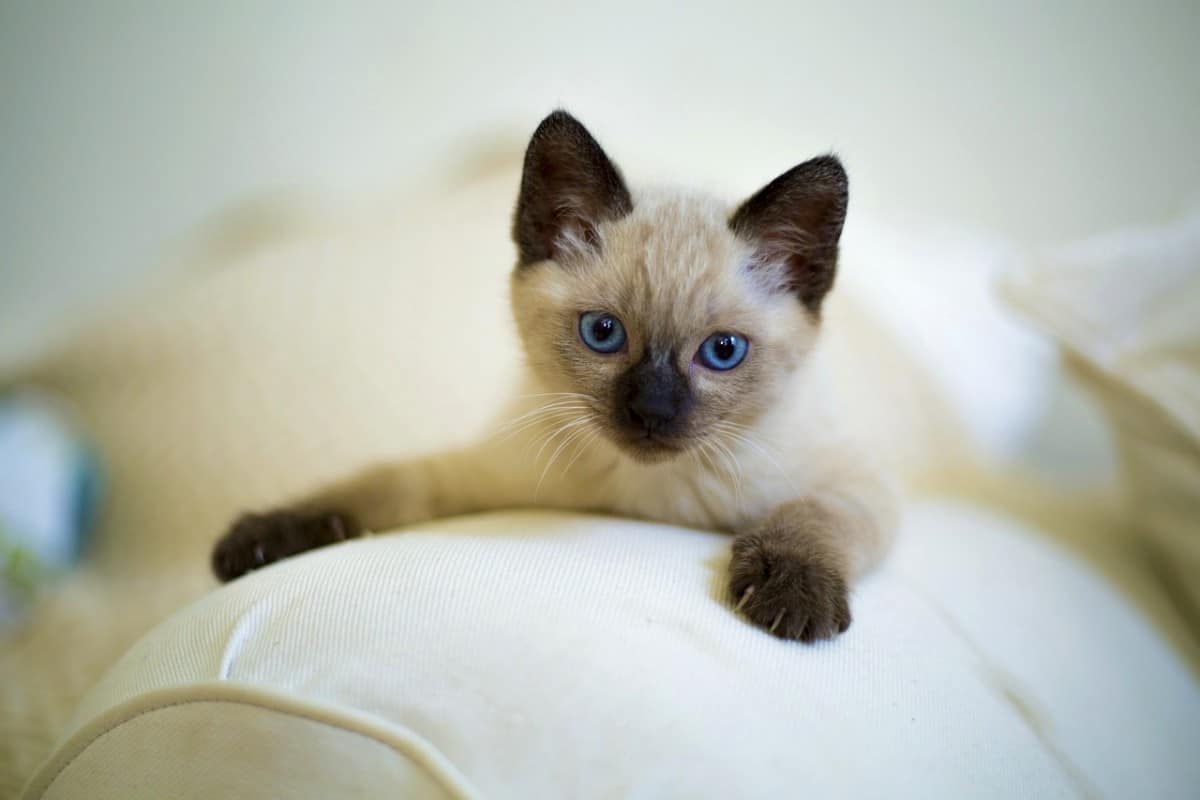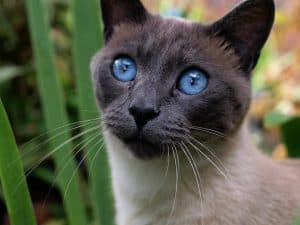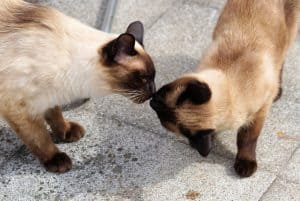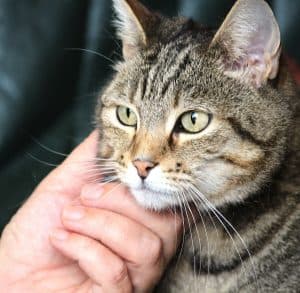If you are privileged to be some lovely cat’s human pet, then you must be painfully familiar with the phenomenon of hairballs. Unfortunately, those pesky furballs are not only unsightly but could also seriously harm the health of our four-legged friends. It is, therefore, essential to do everything in our power to prevent them. If you are not quite sure how to do that, don’t worry — our comprehensive guide should help you answer the question How to stop my cat getting hairballs? once and for all.
What Are Hairballs?
Before we get to hairball prevention, we need to get clear on what hairballs are in the first place. Simply put, hairballs are just what they sound like: bunches of loose hair from your cat’s coat. The problem is that they have somehow ended up in its stomach.
What Causes Hairballs?
Hairballs are the result of your pet’s natural grooming practices. As your cat licks its coat, the miniature hooks on its tongue catch loose hairs. The animal then swallows some of them, and they make their way to its digestive tract. Most of the hairs pass through the stomach and into the intestines unobstructed and are then expelled each time your cat visits the litter box.
However, some of the ingested hairs stick to each other and form ball-like structures in the cat’s stomach. Sometimes, they become too large to pass through to the intestines. As the only way out is now back through the mouth, your cat’s body triggers a vomiting response to get rid of them. In fact, “hairballs” is somewhat of a misnomer: as the hair passes through the tube-like esophagus, it often comes out in narrow, elongated shapes.
Who Gets Hairballs?
While all cats get hairballs, they are more prevalent in long-haired breeds such as Maine Coons or Persians. Hairballs also get more frequent as cats mature, as adults are more proficient groomers than kittens. You are likely to notice more hairballs during shedding seasons and in cats that naturally shed more. Finally, some cats develop compulsive grooming behaviors, which often result in excessive amounts of hairballs.
Are Hairballs Dangerous for My Cat’s Health?
For the most part — no. Hairballs are natural byproducts of the normal physiology and behavior of cats and do not typically cause problems other than the occasional gagging and vomiting.
Sometimes, however, hairballs that stay in a cat’s stomach for too long might cause inflammation to the stomach lining. More importantly, if a hairball ends up in your cat’s intestines, it may cause intestinal blockages and other severe health problems. That’s why we want to keep hairballs to a minimum.
Symptoms to Watch Out For
Typical symptoms of a cat trying to eliminate a hairball include dry coughing, gagging, retching, and, of course, vomiting. As long as your cat successfully eliminates the hairball, there’s nothing to worry about.
Other symptoms, however, may indicate more severe and potentially life-threatening health problems. If you observe any of the following, contact your vet right away:
- Diarrhea
- Constipation
- Lack of appetite
- Lethargy
- An overly matted and unkempt coat
- Repeated gagging, hacking, retching, or vomiting without expelling hairballs
- Swollen belly
A word of caution: whenever any of these symptoms are present, don’t say to the vet How to stop my cat getting hairballs? but rather I think there might be something wrong. That way, you will direct their attention to the root cause of the problem.
How to Stop My Cat Getting Hairballs
While you cannot get rid of hairballs completely, there are a few things you can do to reduce their number and frequency.
Grooming
1. Groom Your Cat Daily
Ideally, you should groom your cat daily. By manually removing shedding fur, you will keep the number of hairs that end up in your cat’s stomach to a minimum.
When grooming, pay attention to the type of brush: if it comes with metal bristles, be careful not to accidentally scratch the cat’s skin. For long-haired breeds, use a comb to gently untangle any stubborn knots before reaching for the brush. Make sure to brush through both the top layer and the undercoat, and always go in the direction of the hair growth and not against it.
2. Take Your Cat to a Professional Groomer
It’s also a good idea to take your cat to a professional groomer for a grooming and haircut session at least twice a year. That is particularly important for long-haired breeds, or if your cat refuses to cooperate during at-home grooming.
3. Discourage Compulsive Grooming
Cats typically groom themselves excessively due to anxiety or out of sheer boredom. You can try to discourage this and other compulsive behaviors by spending more time playing and bonding with your cat and providing it with exciting stimuli, such as new toys or more time spent exploring outdoors.
Diet, Hydration, and Exercise
1. Feed Your Cat Anti-Hairball Food
Many brands offer special cat food that helps reduce hairball formation. These foods are packed with all vitamins, minerals, and other nutrients that your cat needs to thrive and keep fit. That helps your cat maintain a healthy and shiny coat, which minimizes shedding.
Anti-hairball foods also contain high amounts of fiber, which stimulates the digestive tract and encourages bowel movement. Fiber particles also attach themselves to lose hair. That makes them heavier, prevents hairball formation, and eases their passage through the intestines.
You can also try natural fiber-rich alternatives to processed anti-hairball food, such as canned pumpkin.
2. Make Sure Your Cat Eats Its Greens
Cats love snacking on leaves and grass for a reason: plants are naturally high in fiber. So, get some cat grass for your home and encourage your cat to nibble on it between meals. However, don’t let your pet eat your houseplants, as some of them may be toxic.
3. Keep Your Cat Hydrated
water is indispensable for a healthy digestive function. Therefore, see that your cat has access to plenty of fresh and clean water at all times, especially when you are away. If your cat prefers running water, consider getting a fountain-style pet dispenser.
4. Keep Your Cat Active
Make sure your pet gets enough exercise on a daily basis. Physical activity stimulates the digestive system and encourages bowel movement.
Laxatives and Lubricants
1. Use a Laxative or Lubricant
High-fiber food prevents the formation of new hairballs but is not that effective in helping existing ones pass through the digestive tract. To do that, you may have to use a laxative or lubricant instead. Laxatives help the cat expel hairballs through its intestines, while lubricants help its vomit.
There are many products on the market. Some are mixed in with the cat’s food, and others are applied on the cat’s paw for it to lick off while grooming. In either case, consult your vet before using any such products.
2. Use Vegetable Oils
Most store-bought lubricants are petroleum-based. If you prefer a more natural alternative, give your cat a small amount of vegetable oil with its food. However, make sure to check with your vet first.
When Nothing Else Seems to Work… How to Stop My Cat Getting Hairballs?
1. Check for Fleas
Sometimes, cats groom themselves obsessively because they have fleas. Some cats are extra sensitive or develop allergic reactions to flea bites. The itchiness then causes grooming behavior. If you discover fleas, consult your vet for possible treatment options.
2. Check for Underlying Medical Conditions
Obsessive grooming or retching may also be an indication of underlying health conditions, such as intestinal blockage, allergies, asthma, or a neurological disorder. Therefore, make sure to get expert medical advice.
To Conclude
So, to answer your question How to stop my cat getting hairballs? — unfortunately for your carpet, there’s no 100% getting rid of them. Luckily, they are more annoying than they are dangerous. Nevertheless, be vigilant, look after, and groom your cat regularly: that way, both of you will stay happy and healthy in the long term.
[su_box title=”Affiliate Disclosure”]This website is supported by its readers. Please assume that all links are affiliate links. If you make a purchase from one of the links we will make a commission from Amazon. Thank you.[/su_box]









